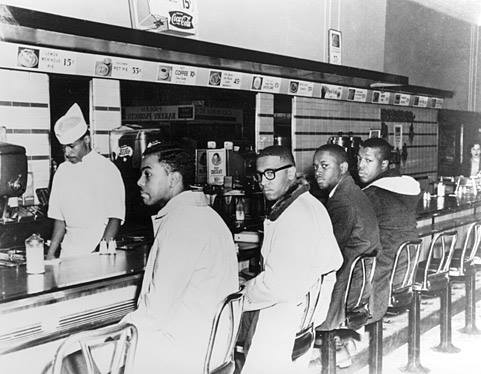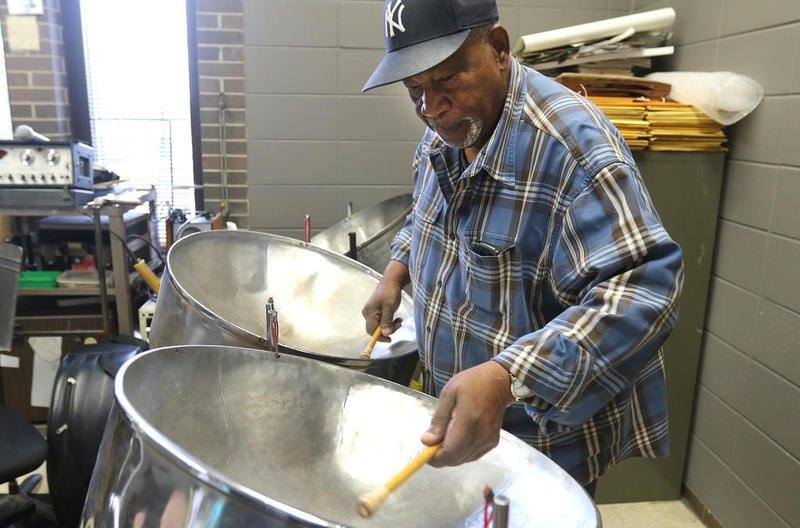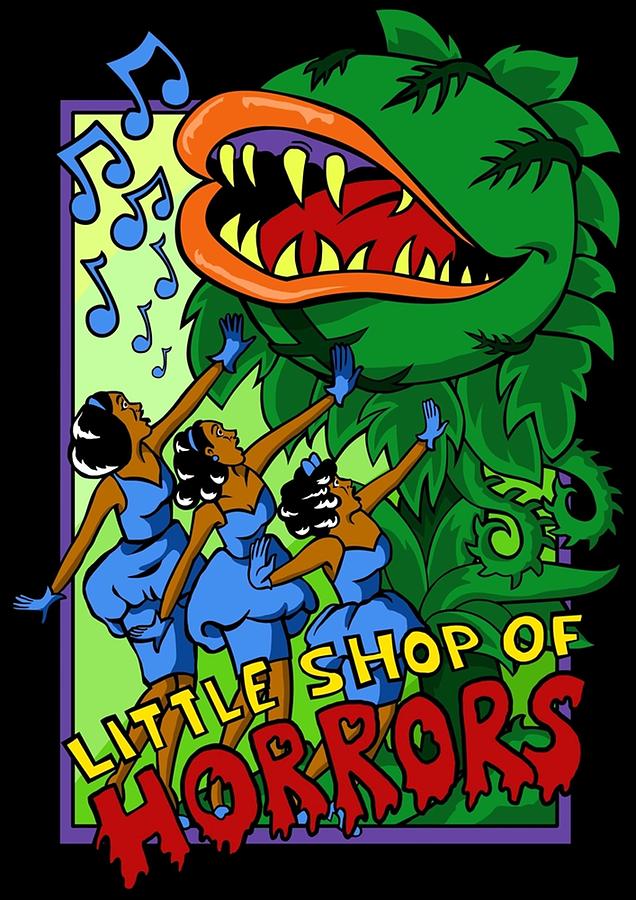Blog
Alphonso Johnson (born February 2, 1951 Philadelphia) is an American jazz bassist active since the early 1970s. Johnson was a member of the jazz fusion group Weather Report from 1973 to 1975, and has performed and recorded with numerous high-profile rock and jazz acts including Santana, Phil Collins, members of the Grateful Dead, Steve Kimock, and Chet Baker.
more...Graham William Nash OBE (born 2 February 1942) is an English-Americanmusician, singer and songwriter. He is known for his light tenor voice and for his contributions as a member of the Hollies and Crosby, Stills & Nash.
Nash is a photography collector, a published photographer, and digital image printing pioneer. He was inducted into the Rock and Roll Hall of Fame as a member of Crosby, Stills & Nash in 1997 and as a member of the Hollies in 2010. He was appointed an Officer of the Order of the British Empire (OBE) in the 2010 Birthday Honours List for services to music and to charity.
Nash holds four honorary doctorates, including one from the New York Institute of Technology, one in music from the University of Salford in 2011 and one in fine arts from Lesley University in Cambridge, Massachusetts.
more...Stan Getz (born Stanley Gayetski; February 2, 1927 – June 6, 1991 Philadelphia) was an American jazz saxophonist. Playing primarily the tenor saxophone, Getz was known as “The Sound” because of his warm, lyrical tone, with his prime influence being the wispy, mellow timbre of his idol, Lester Young. Coming to prominence in the late 1940s with Woody Herman‘s big band, Getz is described by critic Scott Yanow as “one of the all-time great tenor saxophonists”. Getz performed in bebop and cool jazz groups. Influenced by João Gilberto and Antônio Carlos Jobim, he also helped popularize bossa nova in the United States with the hit 1964 single “The Girl from Ipanema“.
more...Sonny Stitt (born Edward Hammond Boatner Jr.; February 2, 1924 – July 22, 1982 Boston) was an American jazz saxophonist of the bebop/hard bop idiom. Known for his warm tone, he was one of the best-documented saxophonists of his generation, recording more than 100 albums. He was nicknamed the “Lone Wolf” by jazz critic Dan Morgenstern because of his tendency to rarely work with the same musicians for long despite his relentless touring and devotion to the craft. Stitt was sometimes viewed as a Charlie Parker mimic, especially earlier in his career, but gradually came to develop his own sound and style, particularly when performing on tenor saxophone and even occasionally baritone saxophone.
more...
IC 405 (also known as the Flaming Star Nebula, SH 2-229, or Caldwell 31) is an emission and reflection nebula in the constellation Auriga north of the celestial equator, surrounding the bluish, irregular variable star AE Aurigae. It shines at magnitude +6.0. Its celestial coordinates are RA 05h 16.2m dec +34° 28′. It is located near the emission nebula IC 410, the open clusters M38 and M36, and the K-class star Iota Aurigae.
The nebula measures approximately 37.0′ x 19.0′, and lies about 1,500 light-years away from Earth. It is believed that the proper motion of the central star can be traced back to the Orion’s Belt area. The nebula is about 5 light-years across.

James Mercer Langston Hughes (February 1, 1901 – May 22, 1967) was an American poet, social activist, novelist, playwright, and columnist from Joplin, Missouri. One of the earliest innovators of the literary form called jazz poetry, Hughes is best known as a leader of the Harlem Renaissance.
Growing up in the Midwest, Hughes became a prolific writer at an early age. He moved to New York City as a young man, where he made his career. He studied at Columbia University in New York City. Although he dropped out, he gained notice from New York publishers, first in The Crisis magazine and then from book publishers, and became known in the creative community in Harlem. His first poetry collection, The Weary Blues, was published in 1926. Hughes eventually graduated from Lincoln University.
In addition to poetry, Hughes wrote plays and published short story collections, novels, and several nonfiction works. From 1942 to 1962, as the civil rights movement gained traction, Hughes wrote an in-depth weekly opinion column in a leading black newspaper, The Chicago Defender.
more...Joseph Leslie Sample (February 1, 1939 – September 12, 2014) was an American jazz keyboardist and composer. He was one of the founding members of The Jazz Crusaders in 1960, after which its name was shortened to “The Crusaders” in 1971. He remained a part of the group until its final album in 1991, and also the 2003 reunion album Rural Renewal.
Beginning in the late 1960s, he saw a successful solo career and guested on several recordings by other acts, including Miles Davis, George Benson, Jimmy Witherspoon, Michael Franks, B. B. King, Eric Clapton, Steely Dan, Joni Mitchell, Anita Baker, and the Supremes. Sample incorporated gospel, blues, jazz, latin, and classical forms into his music.
more...Joshua Redman (born February 1, 1969) is an American jazz saxophonist and composer. He is the son of jazz saxophonist Dewey Redman (1931–2006). In addition to his own projects, Redman has recorded and performed with musicians including Joey Alexander, Brian Blade, Ray Brown, Dave Brubeck, Chick Corea, The Dave Matthews Band, Jack DeJohnette, Bill Frisell, Aaron Goldberg, Larry Goldings, Charlie Haden, Herbie Hancock, Roy Hargrove, Roy Haynes, Billie Higgins, Milt Jackson, Elvin Jones, Quincy Jones, Big Daddy Kane, Geoff Keezer, B.B. King, The Lincoln Center Jazz Orchestra, Letieres Leite & Orkestra Rumpilezz, DJ Logic, Joe Lovano, Yo Yo Ma, Branford Marsalis, Christian McBride, John Medeski, Brad Mehldau, Pat Metheny, Marcus Miller, Paul Motian, Meshell Ndegeocello, Leon Parker, Nicholas Payton, John Psathas, Simon Rattle, Dewey Redman, Dianne Reeves, Melvin Rhyne, The Rolling Stones, The Roots, Kurt Rosenwinkel, John Scofield, Soulive, String Cheese Incident, Clark Terry, Toots Thielemans, The Trondheim Jazz Orchestra, Mark Turner, McCoy Tyner, Umphrey’s McGee, US3, Bugge Wesseltoft, Cedar Walton, Stevie Wonder and Sam Yahel.
more...Sadao Watanabe (渡辺 貞夫, Watanabe Sadao, born 1 February 1933) is a Japanese jazz musician who plays alto saxophone and sopranino saxophone. He is known for his bossa nova recordings, although his work encompasses many styles, with collaborations from musicians all over the world.
In 1969, Watanabe began working part time as a radio broadcaster, promoting jazz across Japan. From 1972, his programme My Dear Life ran for 20 years. He continued to perform internationally, including performances at Montreux Jazz Festival and Newport Jazz Festival. In 1970, he released his album Round Trip, featuring Chick Corea, Jack DeJohnette, and Miroslav Vitouš. Watanabe continued performing and recording throughout the 1970s and 1980s, amassing a catalogue of more than 70 albums as leader.
more...Dennis Emmanuel Brown CD (1 February 1957 – 1 July 1999) was a Jamaicanreggae singer. During his prolific career, which began in the late 1960s when he was aged eleven, he recorded more than 75 albums and was one of the major stars of lovers rock, a subgenre of reggae. Bob Marley cited Brown as his favourite singer, dubbing him “The Crown Prince of Reggae”, and Brown would prove influential on future generations of reggae singers.
After returning to Kingston, Jamaica, on the evening of 30 June 1999, he was rushed to Kingston’s University Hospital, suffering from cardiac arrest. Brown died the next day, the official cause of his death was a collapsed lung.
more...Singer and actress Marianne Faithfull has died at the age of 78, her spokesperson has said. (29 December 1946 – 30 January 2025)
Born in Hampstead in December 1946, she was known for hits like As Tears Go By, which reached the UK top 10 in 1964, and for starring roles in films including 1968’s The Girl On A Motorcycle.
She was also famously the girlfriend of Rolling Stones frontman Mick Jagger in the 1960s, inspiring songs such as Wild Horses and You Can’t Always Get What You Want. After a period of heroin addiction in the 70s, she resurrected her career with the classic album Broken English.
Paying tribute, Jagger described Faithfull as “a wonderful friend, a beautiful singer and a great actress,” saying he was “so saddened”.

Harold “Chuck” Willis (January 31, 1926 – April 10, 1958) was an American blues, rhythm and blues, and rock and roll singer and songwriter. His biggest hits, “C. C. Rider” (1957) and “What Am I Living For” (1958), both reached No.1 on the BillboardR&B chart. He was known as The King of the Stroll for his performance of the 1950s dance the stroll.
Willis was born in Atlanta, Georgia, in 1926. He was spotted at a talent contest by Atlanta radio disc jockey Zenas Sears, who became his manager and helped him to sign with Columbia Records in 1951. After one single, Willis began recording on a Columbia subsidiary, Okeh. During his stay at Okeh, he established himself as a popular R&B singer and songwriter, performing material that he wrote himself. In 1956, he moved to Atlantic Records where he had immediate success with “It’s Too Late“, “Juanita” and “Love Me Cherry”.
His most successful recording was “C.C. Rider“, which topped the US Billboard R&Bchart in 1957 and also crossed over and sold well in the pop market. Jerry Wexler said it was Willis’s surprising idea to “do an old standard” instead of one of his own songs.“C.C. Rider” was a remake of a twelve-bar blues, performed by Ma Rainey in Atlanta before Willis was born. Its relaxed beat, combined with a mellow vibraphone backing and chorus, inspired the emergence of the popular dance, The Stroll. When performing on stage Willis and his group would do this step side to side. Dick Clark played “C. C. Rider” on American Bandstand, and “The Stroll” became a popular dance. Willis’s follow-up was “Betty and Dupree”, another “stroll” song and a similar “old standard”, which also did well. Wexler said that Dick Clark used “Betty and Dupree” on American Bandstand to accompany “The Stroll,” and that is how Willis became known as “King of The Stroll.” Willis’ single “Going to the River“, a song by Dave Bartholomew and Fats Domino, was a prototype for his “stroll” sound, reaching No.4 on the R&B chart.
more...Little Shop of Horrors by Theatre 55 opening one week from Today at Gremlin Theater. February 7th thru 22nd 2025. Music with Shirley Mier, Lyra Olson, Jamie Carter and mick laBriola. Featuring Van Nixon and Patty Lacy.

More Posts
- World Music with Odpoczno
- Daily Roots with Ras Tweed
- The Cosmos with M8
- Johnny “Big Moose” Walker Day
- Elmo Hope Day
- Shad Collins Day
- World Music with Eleftheria Arvanitaki
- Daily Roots with Israel Vibration
- The Cosmos with NGC 1187
- Reggie Workman Day
- Big Bill Broonzy Day
- World Music with Very Be Careful
- Daily Roots with Uwe Banton
- The Cosmos with M20
- Joe Chambers Day
- Clifton Chenier Day
- Johnny Smith Day
- World Music with Haig Yazdjian
- Daily Roots with Peter Tosh
- Your Community Band 6-24-18 2pm
